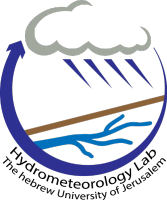Abstract:
Abstract Documenting hillslope response to hydroclimatic forcing is crucial to our understanding of landscape evolution. The evolution of talus-pediment sequences (talus flatirons) in arid areas was often linked to climatic cycles, although the physical processes that may account for such a link remain obscure. Our approach is to integrate field measurements, remote sensing of rainfall and modeling to link between storm frequency, runoff, erosion and sediment transport. We present a quantitative hydrometeorological analysis of rainstorms, their geomorphic impact and their potential role in the evolution of hyperarid talus-pediment slopes in the Negev desert, Israel. Rainstorm properties were defined based on intensity–duration–frequency curves and using a rainfall simulator, artificial rainstorms were executed in the field. Then, the obtained measured experimental results were up-scaled to the entire slope length using a fully distributed hydrological model. In addition, natural storms and their hydro-geomorphic impacts were monitored using X-band radar and time-lapse cameras. These integrated analyses constrain the rainfall threshold for local runoff generation at rain intensity of 14 to 22 mm h-1 for a duration of five minutes and provide a high-resolution characterization of small-scale runoff-generating rain cells. The current frequency of such runoff-producing rainstorms is \~1–3 per year. However, extending this local value into the full extent of hillslope runoff indicates that it occurs only under rainstorms with ≥ 100-years return interval, or 1% annual exceedance probability. Sheetwash efficiency rises with downslope distance; beyond a threshold distance of \~100 m, runoff during rainstorms with such annual exceedance probability are capable of transporting surface clasts. The erosion efficiency of these discrete rare events highlights their potential importance in shaping the landscape of arid regions. Our results support the hypothesis that a shift in the properties and frequency of extreme events can trigger significant geomorphic transitions in areas that remained hyperarid during the entire Quaternary. © 2020 John Wiley & Sons, Ltd.
Website

